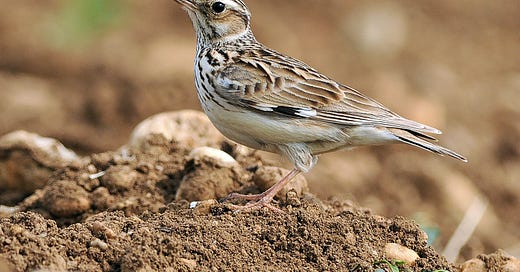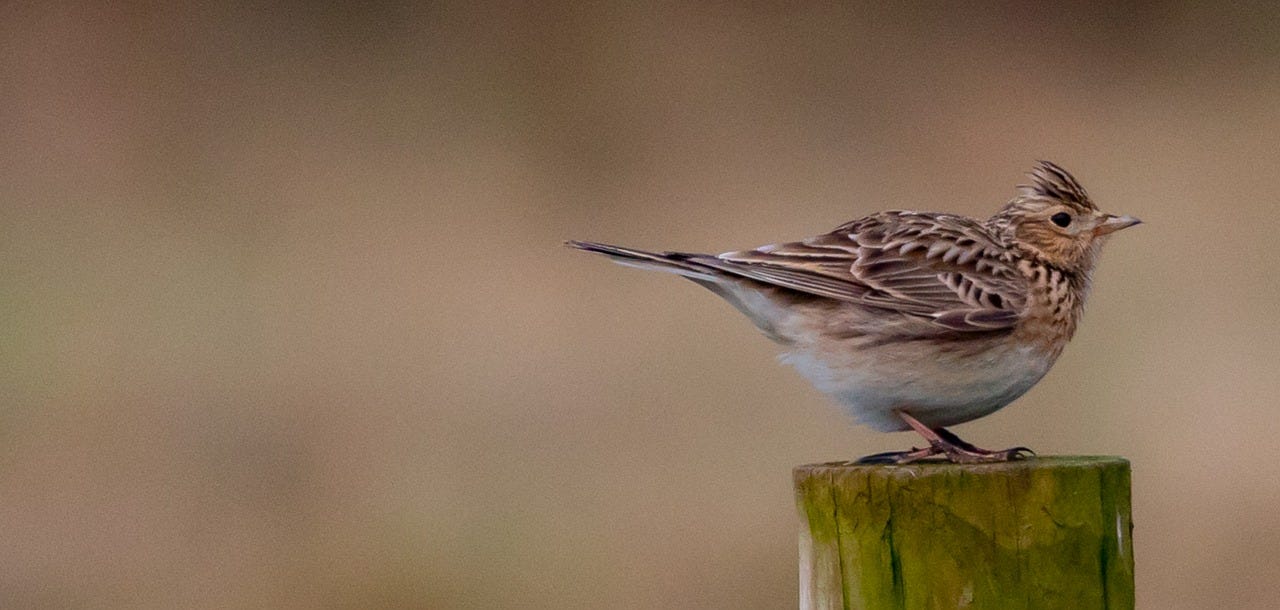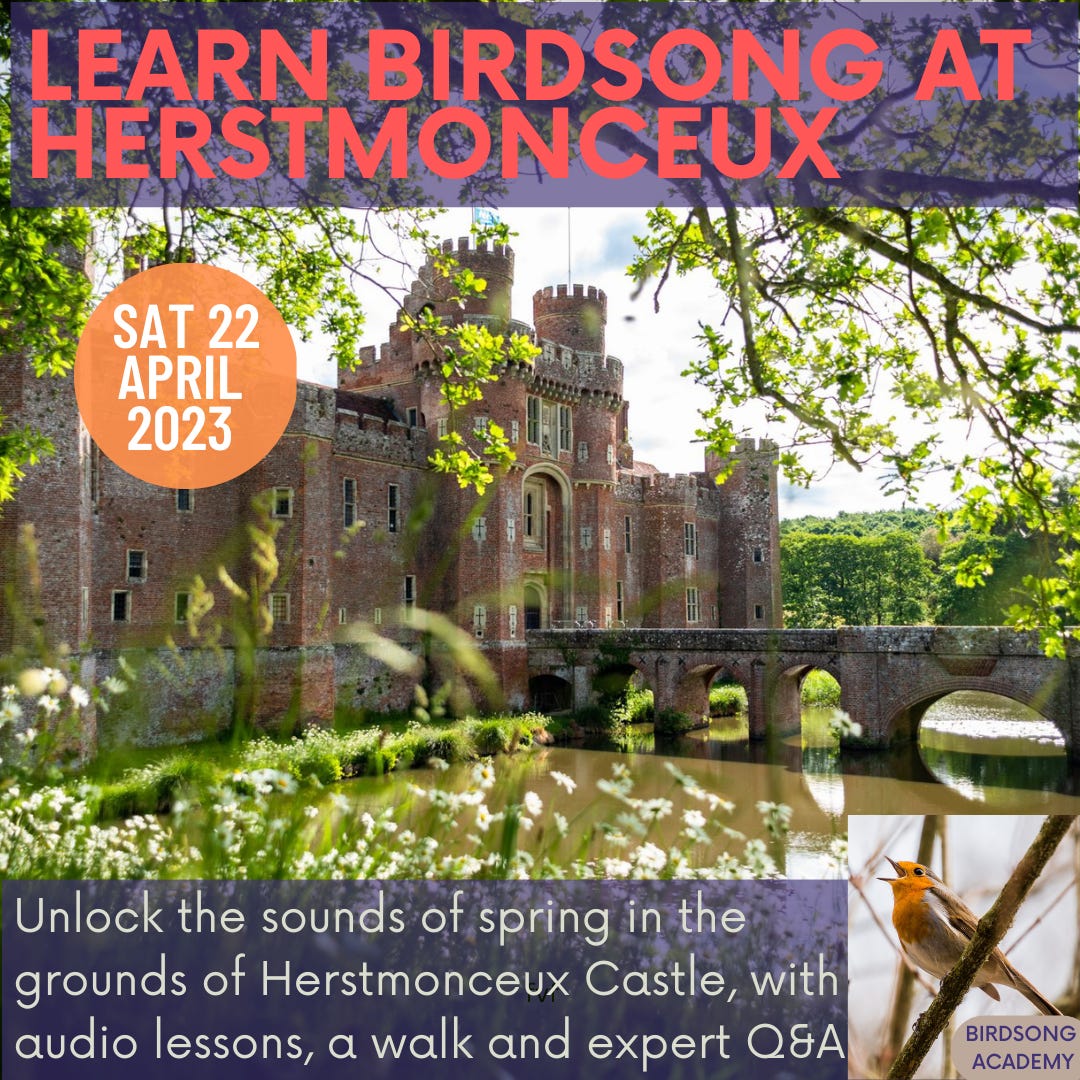While the skylark reigns over the most open landscapes, woodlarks like a tree or two, and in Britain they are found mainly on the heathland and open forests of southern England.
The song has similarities with those of tree pipit and redstart, both of which might be found in the same habitat. But to most ears the woodlark is richer, more melodious, and it repeats a wistful descending series of liquid notes that are distinctive.
Woodlarks deploy a similar song-flight technique to skylarks, hanging in the sky on fluttering wings while continuously throwing down their song.
If you can spot the bird against the sky you may notice that its tail is much shorter than the skylark’s.
However, they also readily sing from a perch, usually a high branch, which is less distinctive, given the number of other birds that take the same approach.
Woodlarks can be encountered feeding on areas of short turf, particularly forest paths between gorse and heather.

Though at first sight they may appear to be indistinct brown birds, their plumage is richer than the skylark’s
They have a chestnut colouring to the face and a strong pale stripe over the eye, which extends all the way around to the back of the head to give the appearance of a neat brown cap.
Like many other heathland birds, woodlarks often abandon the heaths in winter and this species likes to band together in small groups on arable farmland, where they can be quite elusive and go unnoticed.
But by March, they are back on their breeding grounds, and filling the sky with this sweet, evocative song until late spring and early summer.
Also worth bending your neck for: Skylark
With snow arriving across much of the country, it seemed perverse to feature our first spring warbler, the chiffchaff, as planned. Better a hardy woodlark. We’ll return to the chiffchaff next week.
Quote of the week:
I was struck by this excerpt from Wintering author Katherine May’s latest book, as featured in her newsletter Stray Attention:
“Enchantment cannot be destroyed. We just have to remember that we need it. And now when I start to look for it, there it is: pale, intermittent, waiting patiently for my return. The sudden catch of sunlight behind stained glass. The glint of gold in a stream. The words that whisper through the leaves.”
Many of us experience birdsong much the same way, I believe.
Learn more birdsong this spring:
The 2nd and final Birdsong Essentials course of 2023 begins at the end of this month. Over ten weeks you can dive deep into the dawn chorus wherever you are, learning with others and picking up tips and tricks to tune your ears. There are ten standard places available, and two low-cost tickets.
Up With The Birds is our free-to-all ‘virtual dawn chorus’ meeting on Zoom. Will anything be singing in the snow? Find out this Saturday, 11 March.
Half-day Sussex birdsong ‘walkshops’, in Stanmer Park, Brighton and at Herstmonceux Castle (near Hailsham).
Support Shriek of the Week: for £5 a month or £25 a year you can help me to keep on Shrieking - in return you get narrated posts, exclusive early-morning Zooms, and eternal feathered blessings.
Catch up with all the Shrieks so far.





